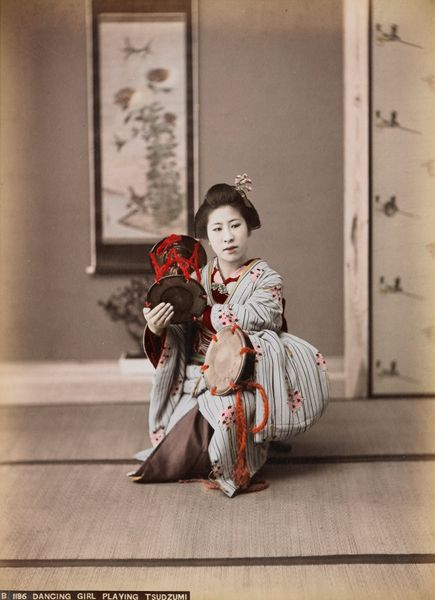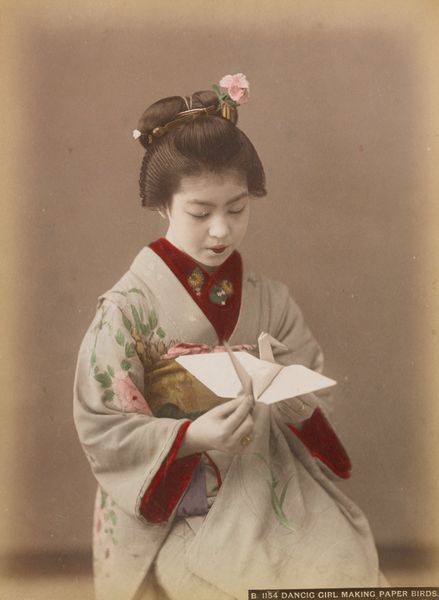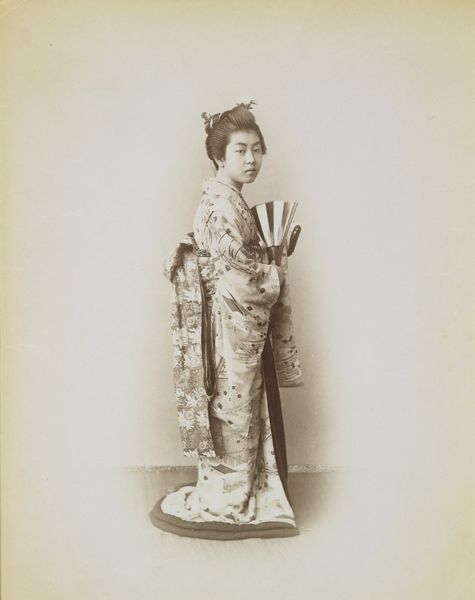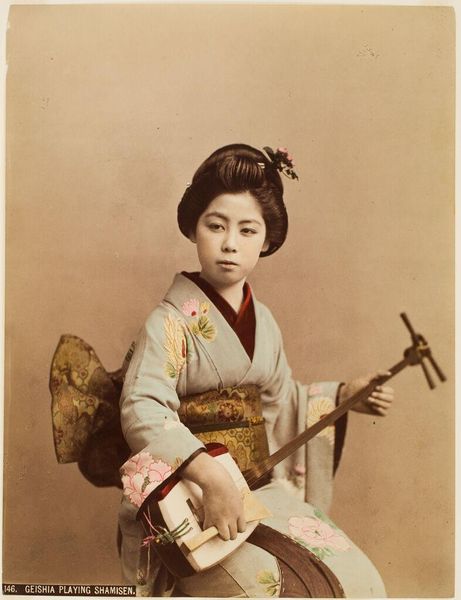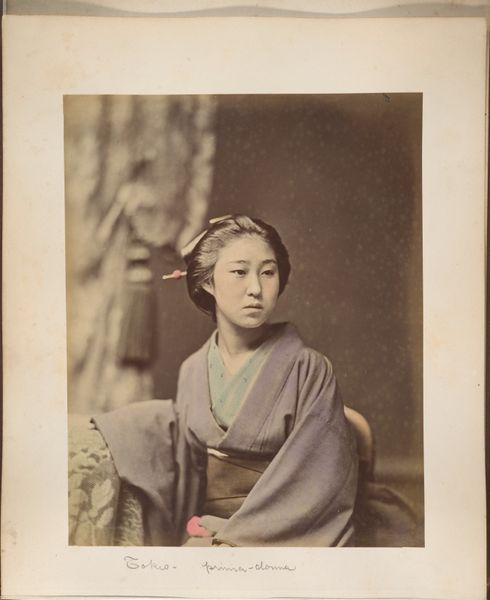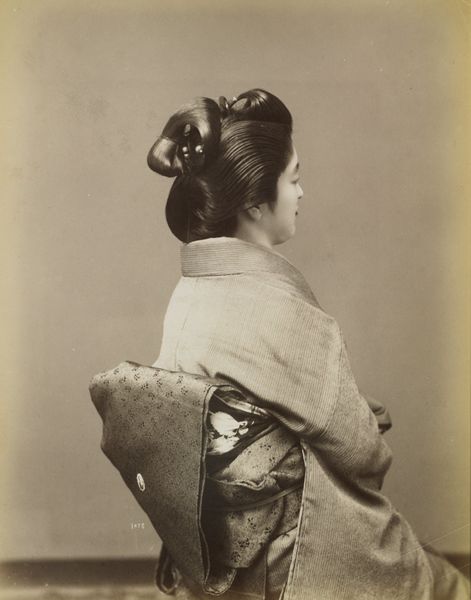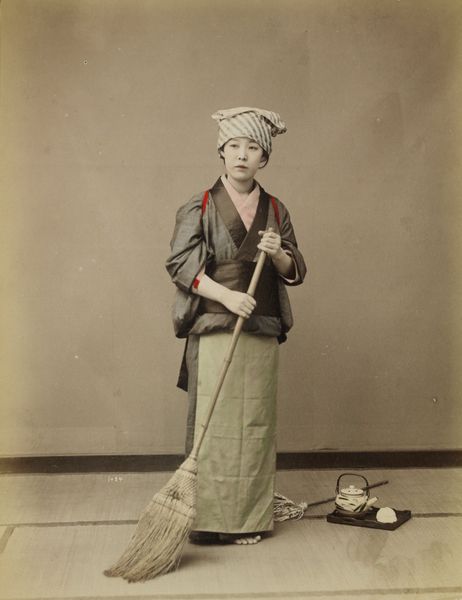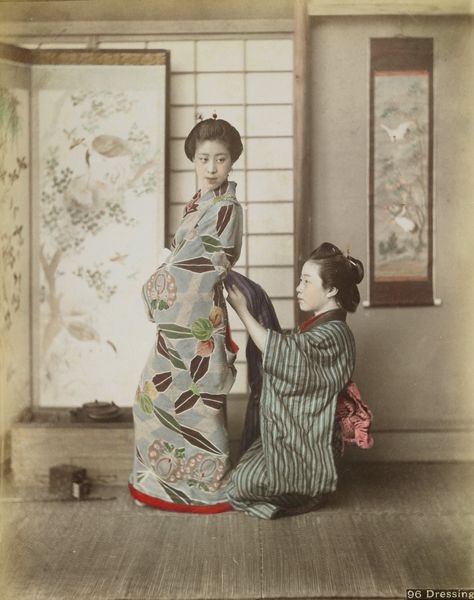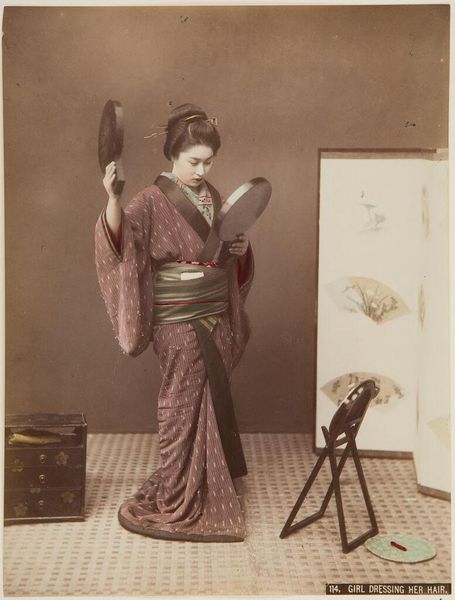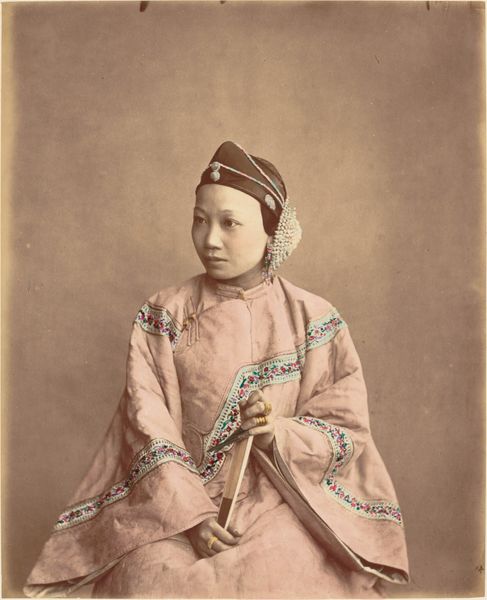
albumen-print, photography
#
albumen-print
#
portrait
#
photography
Dimensions: 25.1 x 20.2 cm (9 7/8 x 7 15/16 in.)
Copyright: Public Domain
Curator: This photograph, dating from the 1870s, is titled "Tea House Waitress" and was taken by Suzuki Shin'ichi. It resides here at the Metropolitan Museum of Art. What's your immediate take? Editor: She's captivating, and there’s a wistful stillness about her. The muted tones enhance that quiet mood. Curator: Absolutely. It's a hand-colored albumen print. What strikes me is how it embodies the Japonisme movement. We see a real surge of interest in Japanese art and culture during this period in the West. This is less of documentary photograph, and more of a symbolic representation of Japanese femininity aimed toward western audiences. Editor: Interesting. Do you think there’s a subtle commodification there? Presenting her almost as a curated object for Western consumption? Curator: That's a critical point. The positioning and idealization certainly reflect Orientalist views, projecting Western fantasies onto the East. Consider the careful arrangement of her hair ornaments, the stylized pose. These elements speak volumes about cultural expectations and artistic license. It's more of a studio construction than a slice of daily life. Editor: It’s almost like she is styled and curated to represent certain Western preconceptions of Japanese beauty and exoticism. Yet the single white flower is so lovely. And that crimson sash really commands your attention, creating a focal point amid the darker palette. It really pulls you in and disrupts the otherwise muted scheme of color in the piece. Curator: Flowers have traditionally represented femininity. In certain Western contexts, white symbolizes purity and innocence, adding another layer to her perceived role. What is fascinating is to imagine this portrait in contrast with photographs taken by non-Western photographers and in different settings. Then it would show an entirely different reading of womanhood. Editor: It’s a great piece for really investigating the dialogue between art and social perceptions during the era, and that interplay really keeps us thinking. Curator: Precisely, a testament to how photographic imagery from that period really shaped a broader, at times very biased understanding of Japanese society and its people. Thank you for discussing this photograph with me.
Comments
No comments
Be the first to comment and join the conversation on the ultimate creative platform.
